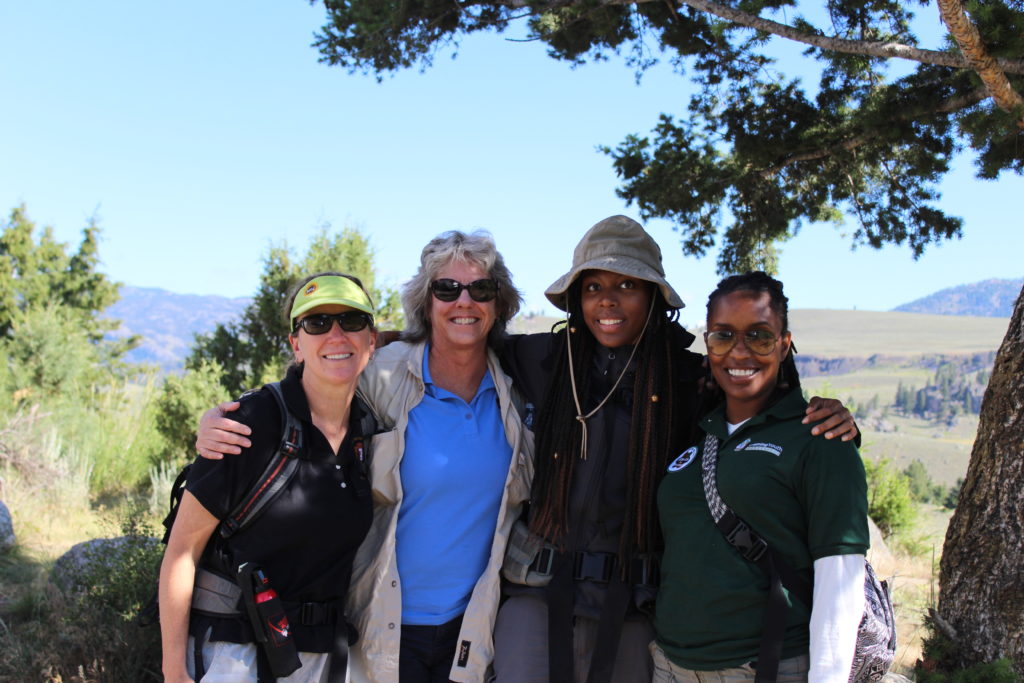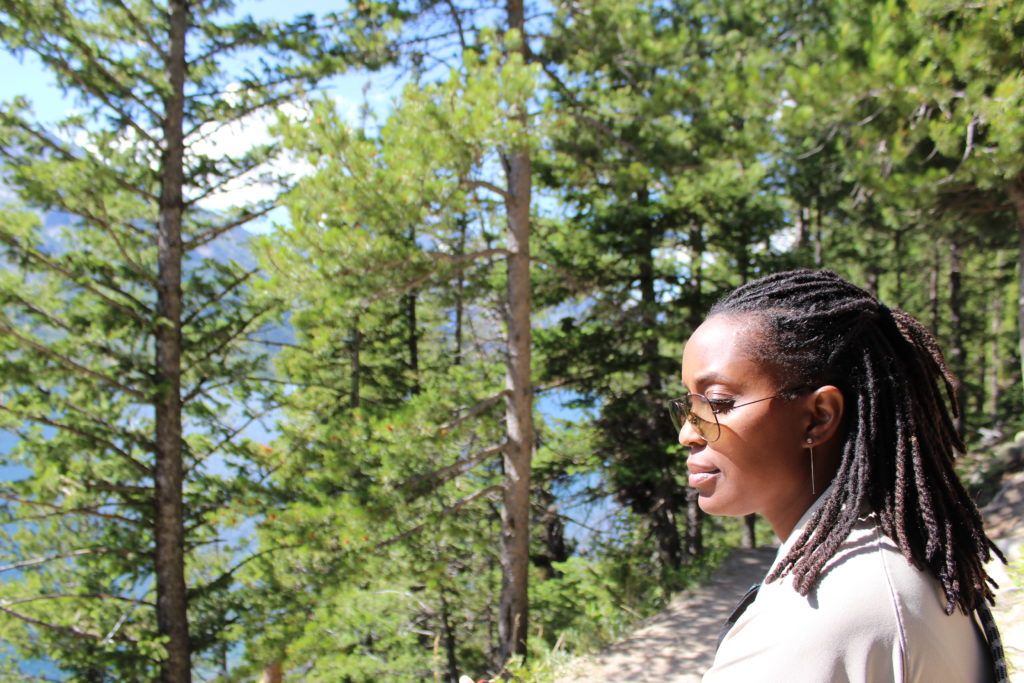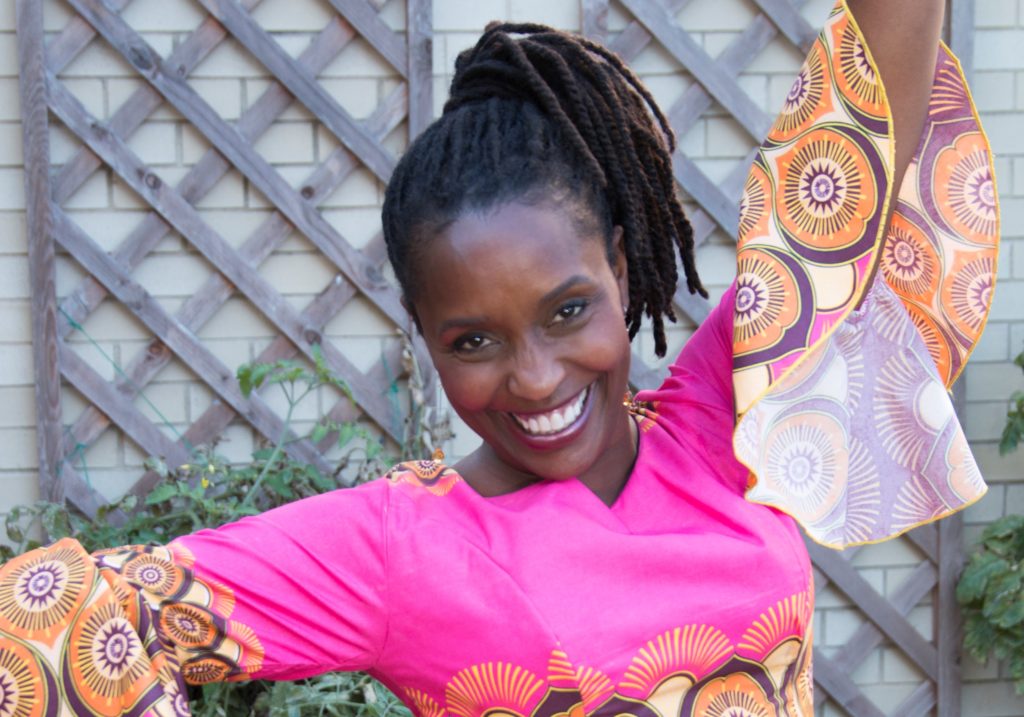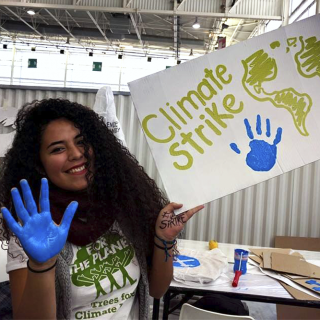Face each day as a challenge and know when to recognize small victories. This is how Angelou Ezeilo, 47, approaches her mission of grabbing each and every opportunity available to offer young people of color not only education, but also pathways to meaningful careers in environmental conservation.
“Ethnic diversity is extremely important for conservation. However, all sorts of diversity is needed, including diversity of thought! As we witness the environmental degradation of our planet due to extreme weather events, we realize more and more that we need innovation and new ideas to mitigate some of the damage,” says the Greening Youth Foundation (GYF) founder. “The next generation offers me hope.”
To help change the face of conservation in North America, GYF helps launch talented young people into careers in conservation, looking to establish a new paradigm of sustainable diversity. “It is critical that we view diversity intentionally and strategically. It is well documented that by 2042 the majority of the American population will be people of color. So, it is essential to act now and engage people of color at all phases of natural resource management, so that they are vested in the sustainability of our planet for future generations,” explains Ezeilo. This way, communities of color will form the backbone of the next generation of conservationists.
Ezeilo’s relationship with nature began in her childhood, when she would escape the dense urban streets of Jersey City, New Jersey, to spend her summers on her family’s farm in upstate New York. “As the years progressed and I started exploring environmental law, and later environmental NGOs, I realized that people of color were not at the table,” she recalls. “I wanted to ensure that a diversity of people have access to careers in natural resource management, starting at a young age. Thus, the impetus for Greening Youth Foundation.”

Angelou Ezeilo with staff of Yellowstone National Park, who are partners on one of the projects developed by GYF (Angelou Ezeilo/Personal Archive)
The path has been long and arduous, since there is little diversity in the conservation and environmental fields in the United States. The leadership of the movement is very white: one study found that in the member organizations of the American Natural Resources Council, people of color account for only 9 percent of the board of directors. And the staffing of such groups isn’t much more diverse: in the main American environmental organizations, people of color make up at most 11 percent of the employees. That percentage is very low, considering that people of color comprise 38 percent of the general population.
But the picture is even worse than those statistics suggest: In a study of diversity in 158 environmental institutions, the Minority Environmental Leadership Development Initiative found that 33 percent of the main environmental organizations and 22 percent of government environmental agencies had no people of color on staff.
In Ezeilo’s opinion, a more diverse movement will be better able to expand its constituency, make political gains, attract more members and volunteers, and find more partnerships and financial support, not to mention develop better, more creative ideas.
GYF has been helping to make this happen since its founding. Over the past decade, the foundation has hired over 10,000 youth through a variety of educational programs. Its Public School Initiative (PSI) offers educational programs focused on environmental conservation and wellness to elementary and middle school students. The GYF’s Youth Conservation Corps and Urban Youth Corps offer paid internships and job opportunities with conservation and green infrastructure teams throughout the country. GYF has also expanded its work to Africa.

Angelou Ezeilo explores the landscape of the Rocky Mountains in Wyoming’s Grand Teton National Park (Angelou Ezeilo/Personal Archive)
To Ezeilou, the participation of people of color in public land management and other environmental fields is a step towards a broader cultural change; she hopes the country can begin to think differently about who can and should make use of public lands, enjoy the outdoors, and take responsibility and leadership to manage communal resources.
“My biggest challenge on this journey has been demonstrating that people of color are very committed, passionate and interested in being connected to our environment.”
Ezeilo explains that, despite difficulties, she has managed to finance her projects with the support of the US federal government, foundations, and various private corporations. She works with 17 other full-time employees and consultants at GYF working daily to change the face of conservation in the United States. “Each year, we place 300 interns in federal lands and private NGOs throughout the country. Each day is a challenge, but there are victories every day… no matter how small.”
Angelou Ezeilo is an Ashoka fellow. Ashoka is a worldwide organization present in 84 countries and leads a movement in which any individual can be responsible for positive social transformation.





